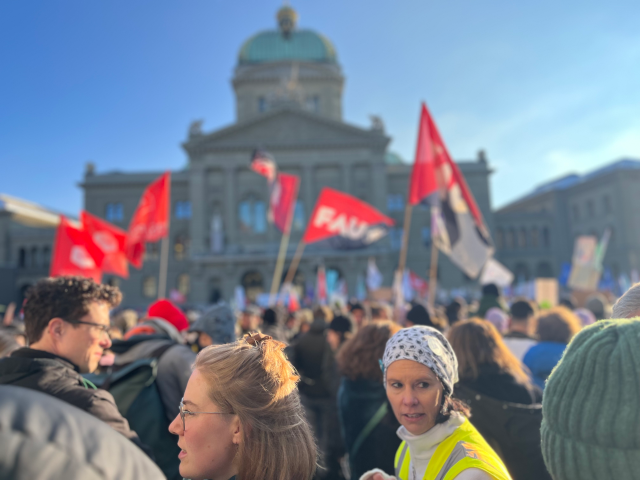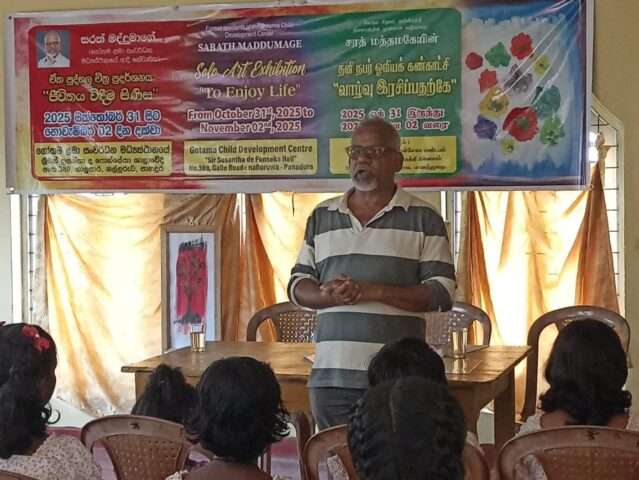By Raju Prabath Lankaloka
The ruling class, who have no answer to the disaster, to which they have dragged the people, are now bowing before the IMF and doing everything they can to fulfil its conditions.
The statement made by the Governor of the Central Bank saying that the IMF conditions cannot be disclosed, as markets may be shaken if they are disclosed, indicates how harmful those conditions are to the country. Ms Samantha Power of the US State Department said that once the staff-level agreement with the International Monetary Fund (IMF) is signed as a complete agreement, Sri Lankans may have to make tough sacrifices. It is clear from that that Ms Samantha Power of the US State Department knows many things that are hidden from the people of Sri Lanka. The statement has shown that the Ranil Rajapaksha regime is just a puppet and who is making the decisions on Sri Lanka.
According to the information available so far, we know that the privatization of a large number of state-owned institutions is included in the IMF conditions. The current regime is using its henchmen to carry out a social media campaign to create a popular mentality that public institutions are loss-makers and should be privatized.
Not a single gentleman writing for hire for the Ranil Rajapaksha regime says a word about why these institutions had to be maintained as state-owned institutions or why these state institutions are making losses.
State Owned Enterprises were emerged because of the incapability of the capitalist system
In the early days of capitalism, laissez-faire was its norm. There was a minimum state interference in economic affairs or economic regulation activities. But very quickly the capitalist system, which is only based on profits, started increasing the working hours of employees, reducing their wages, and employing them in unsafe working conditions etc. The result was the drastic downfall of the living standards of the majority of people. Due to the various struggles waged by the workers against these conditions, governments were forced to take measures to regulate business activities and provide certain essential services through government intervention.
In the early 20th century, the capitalist system plunged the entire world into disaster. During that time, the capitalist system took the entire world through two world wars, the 1929 Great Depression, fascist regimes in countries like Italy and Germany, and the genocides of millions.
During this crisis, European governments began to take over and run some of the industries as the profit-oriented capitalist system could not meet the needs of the people. This was seen in countries like Britain, France, Germany, Italy and Spain. Later this was followed in other European countries and colonies.
After World War II, this trend became stronger. The reason was capitalism’s shift towards the Keynesian economic model, intending to revive the capitalist system after the Second World War. One of its primary features was to generate demand through projects initiated by the government to kick-start economic growth. Due to this, even in advanced capitalist countries, State Owned Enterprises (SOE) were quite common during this period.
By the early 1980s, SOEs contributed roughly 8% of production in developed countries and 15% in developing countries. Even today, most of the giant enterprises in the world (mostly in the fields of oil, gas, electricity, railway etc.) are SOEs. Saudi Arabian Oil Company, Volkswagen of Germany, and Petrochemicals of China are such giant SOEs.
SOEs in Sri Lanka
In Sri Lanka, the establishment of SOEs was started during British rule itself. First, the British government started the services like railways, highways, and postal services to provide the necessary infrastructure to the British planters because they could not be maintained on a commercial basis under the conditions that prevailed at that time, and therefore no one would have invested in those services.
The capitalist system constantly creates wars and disasters, but it does not have the strength to face their consequences of them. This is what happened in World War II. At that time, the British had no other option but to create more SOEs to maintain the distribution of essential goods and services in Sri Lanka.
After gaining independence, there was no capitalist class in the country that had the strength to start heavy industries, Sri Lanka needed to maintain the essential services in a manner that suit the needs of the people. Due to this reason, on one hand, the governments of that time had to take over sectors such as transportation which were run chaotically and start heavy industries like cement, iron, tires and ceramic products as the country required them and capitalists were completely incapable of doing so. On the other hand, strategically important services such as electricity, fuel, ports, and aviation services, as well as several banks and insurance institutions in the financial sector, SOEs to intervene in the wholesale trade, and Paddy Marketing Board to guarantee the prices to the products of the farmers, especially the ones who grow rice, the main crop of Sri Lanka were started under the ownership of the state. They were not started or maintained in that way because of the progressiveness of those regimes, but because the weak capitalist class in Sri Lanka could not maintain them, and the world capitalist system accepted the state ownership of such enterprises during the period when Keynesianism was in practice.
However, by the mid-1970s, SOEs had made a significant contribution to Sri Lanka’s economy. By the mid-1970s, 55% of the country’s industrial production came from SOEs. By early 1950 it was only 15%. By the mid-1970s, the public sector provided 17% of the country’s total employment. By early 1950 it was at a level of 8%.
Thus, SOEs started to cover up the incapability of the capitalist system, even for the time being. What kind of idiocy is it to suggest that the SOEs, which were created seven decades ago due to the incapability of the capitalist system, should be given back to the same system that demonstrated their incapability?
Neo-Liberalism
Whatever the way, the capitalist system cannot escape its inherent feature of economic crises. Because of this, by the 1970s, the world was again entered into a series of economic crises, and with those, the capitalist system threw out Keynesianism and embraced neoliberalism. Neoliberalism is nothing but a new approach to the same liberal order, which has shown its inability for two centuries.
Neoliberalism insisted that the government should get out of business, not because it would bring any happiness to the people, but because it was an opportunity for the capitalists to plunder the massive enterprises, which were built using the people’s (tax) money to get them enriched by pocketing out the huge profits they have generated.
Privatisation in Sri Lanka
After Sri Lanka embraced neoliberalism, in the 1980s privatization was adopted as state policy. By mid-1994, 43 SOEs and the government-owned Central Transport Board had been privatized under the then UNP regime. The Chandrika regime, which came to power in 1994 accelerated the privatization process. They privatised Puttalam Cement, Colombo Gas Company in 1995 and Telecom, Steel Corporation and the entire plantation industry in 1996. During that era, SOEs, those that were privatised, had been generating huge profits.
The gentlemen who scream that they should be privatized because they are making losses today, forget that it was not the SOEs that made losses but the ones, which made excessive profits that were privatized then. They are hiding from the public the fact, that the government’s income has been affected because of those privatisations and that was the reason today the SOEs, which have strategic importance become a burden to the government.
In fact, it should be mentioned that most of those privatisation processes were carried out to fulfil the conditions given by international financial institutions such as IMF, World Bank, and Asian Development Bank when Sri Lanka approach them to obtain loans.
SOEs, inefficiency and making losses
Almost all top positions in SOEs are appointed by political authorities. Most of the time, people who are appointed to such positions are not those who have the qualifications and skills for that position, but those who supported bringing the relevant government to power. The losses caused by the wrong decisions and irregularities made by such people are not the fault of those enterprises that were owned by the government, but the short-sighted actions of the government. This situation can be rectified by a very simple measure such as the establishment of a proper system of appointing people to higher positions.
A research report released by the World Bank in 2004 quoted Rozana Salih (2000), which says that Sri Lanka’s largest (8) SOEs have 53% of redundant employees on average. This also shows the sheer ignorance of the political authorities. Always we can see that heavyweights of governments use their political power to give jobs in large numbers in SOEs to their political supporters.
The State of State Enterprises in Sri Lanka – 2019 report, quoting from the COPE reports, shows that in 2015, about 1490 people were recruited to the State Engineering Corporation violating recruitment procedures.
This irregularity is also can be solved by the strict implementation of a proper recruitment system.
According to Salih’s report, the number of redundant employees in the Ceylon Electricity Board was 51% at that time. But instead of employing those employees effectively, the authorities gave away the work done by the employees of the board to contractors. From cutting way leaves on roadsides, which may become obstacles to power lines, many works such as providing new connections, laying the wires etc., were handed over to the contractors. That has provided an opportunity for its officials to engage in misdeeds under the guise of supervising the work of those contractors. On the other hand, higher officials got increased their salaries at will. In 2015, the Court of Appeal has given a ruling after the proceedings of a Writ petition, that it was illegal to increase the salaries only for high-ranking officials without following the proper procedure, but it has not been rectified until now.
The Auditor General has reported that the Ceylon Coal (Private) Company, a subsidiary of the Ceylon Electricity Board, incurred a loss of Rs. 4 billion while importing coal during the 2009-16 period. This happened due to fraudulent activities.
The loss made by CWE due to the garlic scam in the recent past is over one crore rupees.
In the same way, the losses incurred by Air Lanka in the Air Bus deal, and the losses made in the purchase of locomotives by the Railway Department, which we have seen in the media in the past, are now attributed to the “inefficiencies” of SOEs. But it should be clear that the responsibility for all those irregularities was lying with political authorities and they were sponsored by the political authorities.
It is clear how the regimes first drag those SOEs towards a loss-making position and then plunder them under the term of ‘privatisation’ and within the process, the rulers get to enrich themselves. The fact that Ceylon Steel Corporation was first sold to Hanjung Steel in Korea, but then it was taken over by a person named Nandana Lokuliana in Dubai, bringing it under the grip of ‘crow’, clearly shows the reason why the rulers are so motivated by this privatisation process.
Privatisation is corrupt from the beginning
Most of the privatization processes that took place in Sri Lanka were corrupt from the beginning. The privatisation of Sri Lanka Insurance Corporation and Lanka Marine Services Ltd responsible for bunker marine fuel were annulled by the Supreme Court of Sri Lanka. Those transactions were irregular to that extent. In the FR 158/2007 case regarding the privatisation of the Sri Lanka Insurance Corporation, the Supreme Court stated that it was wrongful, unlawful and illegal. The court has stated that: “It is sufficient to say that the conscience of this court is shocked by how the senior public officers had handled the sale of a pivotal asset of the state which belongs to the people of this country.”
The Tawakkal Company, which bought the Puttalam Cement Factory, has paid part of the purchased price of shares using money raised through an issue of debentures after taking control of Puttalam Cement. This was also questioned before the court, and the court ordered the Tawakkal Company to pay the said loan amount and its interest of Rs. 1.355 billion to Puttalam Cement Company.
Japan’s NTT, which bought only 35% of the shares at the time of Telecom’s privatisation, was given management rights by paying an annual fee equal to 1.2% of Telecom’s revenue. In valuing the telecom, the future cash flow was calculated assuming that communication fees would increase by 10% per year, the tax to be paid as 40%, and the discount rate would be 18%. But according to NTT’s proposal, PERC had agreed to increase telephone charges by 25%, 25%, 20%, 15%, 15% respectively for the next 5 years. That’s much higher than the 10% annual increase they assumed in their assessment. On the other hand, the tax rate for public companies listed on the stock market was 30%. In those days, the interest rate in the country was 12-14%. Accordingly, the stock of Telecom was undervalued.
Similarly, there were reports that the steel corporation was given to the Korean company at an undervalued price.
When the Colombo Gas Company was sold to the Shell Company, they were given monopoly power for gas within Sri Lanka for 5 years and the power to increase the price of gas every year.
Above are only a few of the irregularities that occurred. Reports of irregularities and corruption in many privatisation processes are available in the media.
Privatisation is not always a success
A research report released by the World Bank in 2004 stated that “Excess labor is one of the first cost areas addressed by reforms carried out by governments or new private owners. A recent survey of 308 privatized firms shows worker reductions in close to 80 percent of firms after privatization.” This means getting more work done by fewer employees. That is to intensify exploitation more and more.
After privatisation, one can see that employees are laid-off, exploitation is increased and their profits are greatly increased. This is why investors buy those enterprises.
In Sri Lanka, Sri Lanka Telecom is shown as an example of the success of privatization. But as per the Annual Report of Telecom, it has long-term debts of 37.8 billion. Additionally, they have 54 Billion short-term liabilities including the payments to be made to the contractors who provided services to SLT etc. That is the operational efficiency of Telecom.
On the other hand, even though the salaries of higher executives got enormously increased, the recruitment level salaries of lower-level employees have been slashed over the years. We remember the way they had employed about 1/3 of their total number of employees on manpower basis with low wages and less privileges by creating a manpower agency affiliated to the telecom itself to reduce employee wages and intensify the exploitation. Due to the fights waged by the trade unions for about a decade, the telecom authorities had to wind up the manpower system.
We know that in Sri Lanka, several privatized institutions even had to be taken over back as they did not show the expected developments.
Not only in Sri Lanka but such re-nationalisation or re-municipalisation can also be seen throughout the world due to the degrading quality of the services. After privatization, many organizations intensify exploitation but the quality and utility of the services they provide often decline. ***
According to the report ‘The Future is Public’ released in December 2019 by The Transnational Institute in Amsterdam, from 2000 to 2019, there are 1400 identified cases of re-municipalisation of public services around the world which affected 2400 cities in 58 countries. That re-municipalisation included 311 water distribution facilities, 374 power supply facilities, 192 telecommunication services, 47 transport facilities, 138 health care facilities, 38 educational facilities and 85 waste collection facilities.
Since 2000, about 110 water distribution and sewerage services have been re-municipalised in France alone. In 2008, the city’s water distribution service was taken over again, and in the first year since then, charges have been reduced by 8%, saving €35 million.
The above has shown how ridiculous the privatization imposed by International Financial Institutions over the decades.
Below is an excerpt that I thought was important.
“Over the past two decades, SOEs have been among the largest and fastest expanding multinational companies. According to an IMF study, in the last 10 years itself, SOEs have increased in importance among the world’s largest corporations: …. they play a huge role in most economies. Many countries are relying on SOEs to maintain employment and keep their economies moving. As such, governments can no longer allow SOEs to fail and frequently rush to help distressed ones….
“SOEs are directly and indirectly involved in the fight against COVID, producing ventilators, masks, and even vaccines. …. The electricity generator in Indonesia provides subsidized power to 30 million customers at the request of the Government. In Albania, Bosnia and Herzegovina, North Macedonia, and Serbia, governments are providing utility bill waivers to vulnerable populations (ILO 2020). In Africa, the governments of Nigeria and Angola have negotiated with utility companies not to shut off energy supplies due to non-payment….
“A recent World Bank note describes how SOEs can play a critical role, by bringing relief to the population, staying resilient to shocks, supporting economies in distress and providing jobs. Our note offers sequenced suggestions on what governments can do to ensure SOEs can be part of rapid and targeted crisis response and support the recovery period that follows. It describes measures at the central government level to better equip SOEs’ systems, calibrate risks, and instil controls in large-scale crises.”
Above quote is not from a Marxist website or a left-wing newspaper, but a World Bank blog. At last, the truth has come out from the belly of the beast.
Don’t private companies fail?
Ranil’s lackeys try to paint those private companies are particularly efficient institutions. But globally, more than the SOEs, it is the private organizations that go bankrupt and are closed down due to various irregularities. According to Wikipedia, the number of collapses of large-scale global companies since 2000 is 41. Enron, the 18th largest company in America and the topmost company in the Power & Energy sector, had assets worth $67.5 billion and collapsed in 2001 and the Worldcom which was the 25th largest company in the United States and the topmost company in the Telecommunication sector, which had assets over $91 billion and collapsed in 2002 also among them.
Private companies do every sort of fraudulent activity to increase their profits. Enron and Worldcom, both huge companies, collapsed because of such irregularities.
The Royal Commission into Misconduct in the Banking, Superannuation and Financial Services Industry, established on 14 December 2017 by the Australian government submitted an interim report to the Governor-General of Australia on 28 September 2018 and focused on two key issues; why did it happen, and what can be done to avoid it happening again? In responding to the issue of ‘why’, the Commissioner determined that:
“….. the answer seem(ed) to be greed – the pursuit of short-term profit at the expense of basic standards of honesty….. From the executive suite to the front line, staff were measured and rewarded by reference to profit and sales….. When misconduct was revealed, it either went unpunished or the consequences did not meet the seriousness of what had been done.”
This is the normal nature of any private company. In the face of the crisis the country is in, it is clear what will happen if the country’s strategic areas are handed over to private investors operating on this principle.
In Sri Lanka too, we remember that the government enacted the Revival of Underperforming Enterprises or Underutilized Assets Act, No. 43 of 2011 (this act was repealed by the Ranil’s administration in 2019) to take back the properties of 36 companies, that have leased out government lands but not utilised them at all or no information has provided in that regard.
Workers’ Control is the Solution.
Privatization does not provide any kind of solution to the existing problems of SOEs. Instead, it only creates the conditions necessary to drag the people further down the abyss.
We should learn lessons from the situation where the agriculture sector has fallen, because of the transfer of assets earlier belonged to the Paddy Marketing Board to traders, and the transfer of operations of Lanka Fertilizer Corporation and Colombo Commercial Fertilizer Company to the private sector. At the moment, the prices of all agricultural inputs from seeds to fertilizers and pesticides are decided by the companies who are concerned about their profits instead of the farming industry. On the other hand, the price of agricultural products is determined by traders based on profit. Because of this, 1/3 of the country has lost food security today.
The proposed privatization will drag the other sectors to the same destiny in future.
Only by placing them under workers’ control can the SOEs be built with a plan to prevent losses caused by politicians and eliminate fraud and corruption in them made by politicians and their henchmen.
The workers employed in those institutions have a good understanding of the functioning of those institutions, their weaknesses, their strengths and their capabilities. Therefore, putting these institutions under workers’ control is the only option available to free them from the situation they are in today and provide quality services to the people at an affordable price.
But the existing capitalist system will by no means allow these institutions to be put under workers’ control, giving up their profits. Therefore, the overthrowing of the capitalist system become the foremost important task today.
![]()




